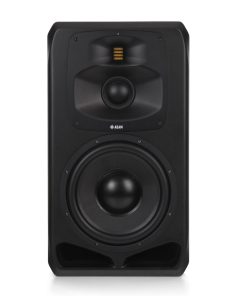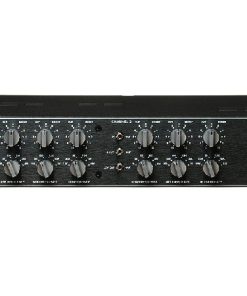Stepped Potentiometers
Recall of all settings is easy thanks to the potentiometers with 41 steps.
Cut/Boost & 1/4 Gain
Each filter band can be boosted or cut up to 20 dB.
If only minimal changes are required, the 1/4 Gain switch can be used to reduce the boost or cut range from +/-20 dB to +/-5 dB.
Frequencies
We have designed the frequency distribution to overlap widely between the bands, so that problematic frequencies can also be addressed with two bands.
|
|
|
|---|---|
|
LF
|
10 Hz – 330 Hz
|
|
LMF
|
33 Hz – 1 kHz
|
|
MF
|
128 Hz – 4.1 kHz
|
|
MHF
|
310 Hz – 10.2 kHz
|
|
HF
|
760 Hz – 24 kHz
|
Bandwidth Q
The bandwidth Q determines the steepness of bell characteristic. A small Q is a wide bandwidth and a high Q a narrow bandwidth.
The labeling of the scale is divided into two parts. The values with white background refer to the proportional Q mode and the values without background refer to the constant Q mode.
On/Off
The orange button is used to switch the individual filter band on and off.
Constant & Proportional Q
The blue button is used to toggle the Q mode.
In constant Q mode, the amplitude is constant regardless of the selected bandwidth. This is ideal for eliminating interfering frequencies.
In proportional Q mode, the amplitude is proportional to the bandwidth. It decreases with increasing bandwidth and vice versa. At the smallest bandwidth setting, the maximum amplitude value is +/- 20 dB, while the maximum amplitude decreases to +/- 2.8 dB at the largest bandwidth setting. This control behavior simplifies sensitive, creative processing and is musically very useful, since high amplitudes become increasingly unusable with increasing bandwidth.




































































